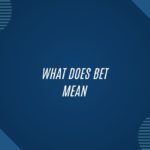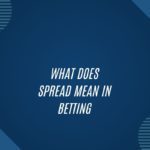Understanding Negative Odds
Negative odds in betting are an indication of the favored outcome in a given wager. They represent the amount one would need to bet to profit $100. For instance, a -150 odds mean that one would need to bet $150 to make a profit of $100. This type of odds is typically associated with the more likely outcome of an event.
When encountering negative odds, it’s important to note that the minus sign indicates the amount one needs to wager in order to win $100 profit. The higher the negative number, the more heavily favored that outcome is in the betting market. Understanding how to interpret and utilize negative odds is key for making informed betting decisions and maximizing potential returns.
Positive vs. Negative Odds
Positive odds, also known as plus odds, indicate the potential profit that can be made on a successful bet. For instance, if the odds are +200, this means that for every $100 wagered, a profit of $200 can be earned if the bet is successful. Positive odds are commonly seen in underdog scenarios where the likelihood of winning is lower, hence offering a higher potential payout.
On the other hand, negative odds, or minus odds, represent the amount needed to be wagered in order to win $100. For example, if the odds are -150, it means that $150 must be bet to win $100. Negative odds are typically associated with favorites or more probable outcomes where the chances of winning are higher, resulting in a lower potential payout. Understanding the distinction between positive and negative odds is crucial for making informed betting decisions based on risk and potential rewards.
Calculating Payouts with Negative Odds
When it comes to calculating payouts with negative odds in betting, it’s essential to grasp the basic principles behind this concept. Negative odds represent the favored outcome in a betting scenario, indicating the amount you need to wager to potentially win $100. For instance, a -200 negative odd suggests that you must bet $200 to earn a $100 profit if your bet is successful. To calculate the total payout when using negative odds, take into account both the stake and the potential profit. Therefore, if you wager $200 on a -200 negative odd and win, you would receive $300 in total – your original $200 stake plus the $100 profit. Understanding the mechanics of negative odds is crucial for accurately predicting potential payouts and managing your betting strategy effectively.
Interpreting Negative Odds in Betting
When it comes to interpreting negative odds in betting, it’s crucial to grasp their meaning. Negative odds represent the favored outcome in a betting scenario. In other words, they indicate how much you need to bet to potentially win $100. For instance, if you see odds of -150, this means you must wager $150 to profit $100. Generally, negative odds suggest a higher chance of winning the bet compared to positive odds.
Understanding negative odds is essential for making informed betting decisions. These odds reveal not only the probability of a certain outcome but also the potential payout if the bet is successful. For instance, if a team has odds of -200 to win a game, it signifies that the sportsbook views them as the favorite. It’s important to consider various factors beyond just the odds themselves, such as team performance, injuries, and recent form, to make smart betting choices when faced with negative odds.
Common Examples of Negative Odds
Negative odds are commonly seen in sports betting, where a team is regarded as the favorite to win. For instance, if the odds for a football team to win a match are -150, this means that you would need to bet $150 to potentially win $100 in profit. It indicates that the team is favored to win, hence the lower potential payout relative to the amount wagered.
In another example, let’s consider a basketball game where a team has odds of -200. This implies that you would have to bet $200 to have the chance of winning $100 in profit. Negative odds reflect the expectation that the team is likely to secure victory, resulting in a lower potential return if the outcome proves favorable.















